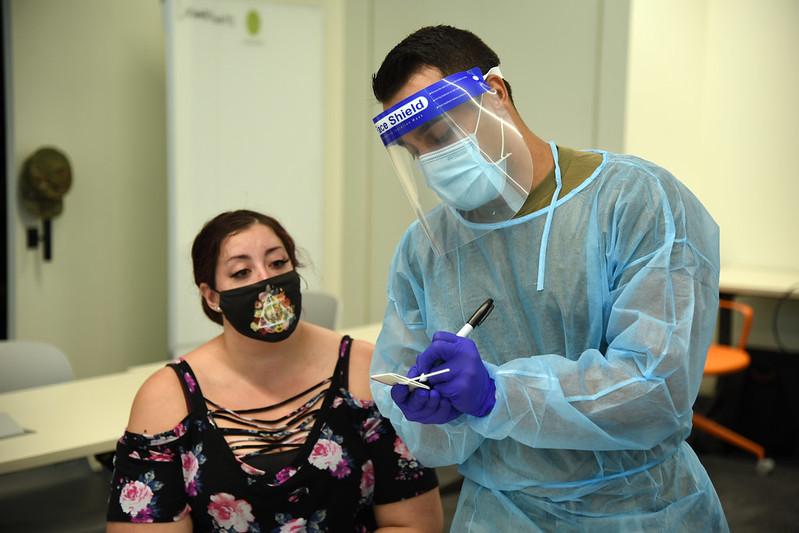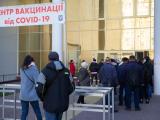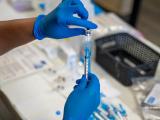US COVID-19 cases are skyrocketing as the coronavirus spreads to every corner of the country.
The United States reported 121,888 new COVID-19 yesterday, and 1,210 deaths, according to the Johns Hopkins COVID-19 dashboard. That's nearly 20,000 more cases than were reported yesterday, and the third day in a row of more than 1,000 deaths. The 7-day daily average of new cases is above 92,000.
The COVID Exit Strategy website, which measures each state's progress based on 14-day trends in positive cases, hospital capacity, and testing, lists 43 states as having uncontrolled virus spread, and six as trending poorly. Only one state—Vermont—is listed as trending better.
"This is going to get worse before it gets better, and it could get significantly worse," former Food and Drug Administration commissioner Scott Gottlieb, MD, told CNBC this morning.
With the results of the US presidential election still uncertain but indications leaning toward a victory for Democratic presidential candidate Joe Biden, Gottlieb said he hoped that Vice President Mike Pence, who heads the White House coronavirus task force, would encourage more aggressive mitigation efforts in the months before the inauguration.
"There's 2 months to go. He could start pulling in some advisors from around the government, maybe from outside the government, who could try to lead a more coordinated strategy," Gottlieb said. "I think there's a real opportunity."
The national coronavirus toll currently stands at 9,611,004 confirmed cases, and 234,944 deaths, according to the Johns Hopkins data.
Surge in the Upper Midwest
While infections and hospitalizations are climbing rapidly across the country, one of the hardest hit states in this current wave of the pandemic is North Dakota, which has reported more COVID-19 cases and deaths per capita over the past week than any state in the nation. Yesterday, North Dakota reported 1,540 new cases and 29 deaths, both new single-day highs, according to The Forum of Fargo-Moorhead. There are just 14 available intensive care unit beds in the state.
Gov. Doug Burgum, who does not support a statewide mask mandate, told reporters yesterday that the state will rely on individuals wearing masks and maintaining distance from one another.
Iowa Gov. Kim Reynolds had a similar message yesterday during a press conference as she and leaders of two of the state's largest hospitals urged Iowans to take additional precautions to slow the spread of the virus, which is stretching the capacity of the state's hospitals.
"Government solutions alone can't stop this virus. It's up to every single one of us," Reynolds told reporters, according to the Des Moines Register.
In neighboring Minnesota today, the Minnesota Department of Health reported a big jump in new infections, from 3,956 confirmed or probable cases on Wednesday to 5,454 on Thursday, with 36 newly reported deaths. Both numbers are single-day records for the state, which is also seeing hospitalizations surge.
"The big fear is that we're going to get to the situation that New York and Italy were in in the spring, and it's a total disaster," an emergency room physician told MPR News. "We're worried. We're all really worried."
Ohio is another Midwestern state where COVID-19 cases are spiking. Gov. Mike DeWine announced yesterday that the state reported a single-day record of 4,961 new cases, and that all 88 Ohio counties are now considered high-incidence for virus spread, the Akron Beacon Journal reported.
COVID on college campuses
In other US developments:
- Roughly 252,000 coronavirus infections have been reported on US college campuses since the pandemic began, according to a New York Times survey. More than 38,000 of those cases have been reported in the last 2 weeks.
- Texas is close to surpassing 1 million COVID-19 cases, according to NBC News. While infections in Texas slowed in August and September after peaking in July, the state has seen a 40% increase in recent weeks.
An internal Centers for Disease Control and Prevention (CDC) review obtained by National Public Radio indicates the agency knew that its initial coronavirus test kit could fail 33% of the time, but released the tests to public health labs anyway. The problems with the CDC test kit contributed to the slow US response to the pandemic. The review also found that the lab that developed the tests was beset with problems.






















